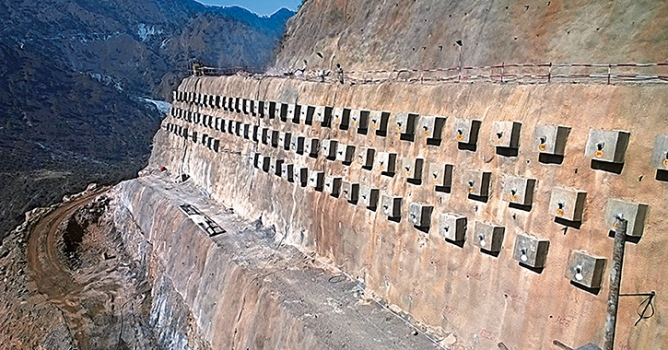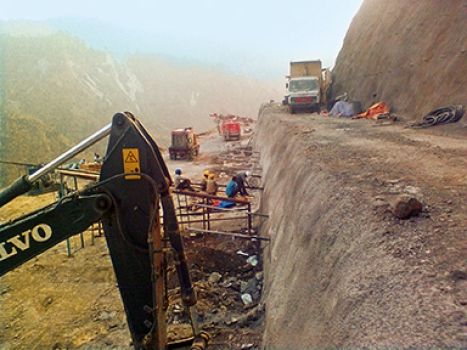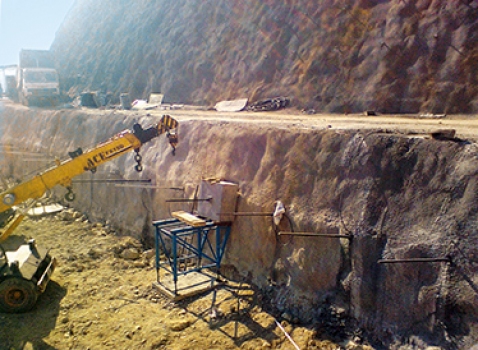Chenab Bridge in India will be the world’s highest railway bridge
Traveling around the mountainous region of Jammu and Kashmir in northern India has always been difficult. In order to considerably shorten travel times, the Indian Government decided to build a new, 345 km long railway route from Jammu to Baramulla. This project includes a new railway bridge across the Chenab River near the town of Katra.
The 469 m long main bridge span will reach a height of 359 m above the River Chenab. Thus, the 1,315 m long bridge will be the world's highest railway bridge. Completion is scheduled for 2019.
Chenab Bridge has design life of 120 years
As the bridge has a design life of 120 years, the General Contractor needed a proven, reliable system for stabilizing the Chenab Valley's massive slopes that have angles between 43° and 77°. Furthermore, the system was also required to be earthquake-resistant. DSI proposed a double corrosion protected bar anchor system consisting of WR bars.
Anchors are produced in a field factory directly on site
Due to the fact that the construction site is located in one of the most remote and difficult to reach parts of India, DSI together with its partners decided to produce the anchors in a field factory directly on site. This way, the permanent corrosion protection can be applied on the systems in close vicinity of the site and is not exposed to damage during the long road transport to the site. In addition to the supply of the rock anchors, the scope of DSI and its Indian partner company also included the supervision of on-site production as well as the installation and stressing of the bar anchors.
So far, over 10,000 m of bars have already been provided. All systems were supplied in different lengths, including bearing plates, anchor caps, nuts, ducts, and corrosion protection compound. In addition, for force monitoring, the DYNA Force® System was supplied for its first geotechnical application in India.
Slope stabilization was carried out in layers of 3-5 m from top to bottom. After excavating each section, the boreholes for the rock anchors were drilled. The anchors were installed and grouted using cement mortar following stressing. For additional stabilization, steel fibre reinforced shotcrete was applied to the slopes to conclude the project.
References
Structure Types
- About this
data sheet - Product-ID
7505 - Published on:
13/06/2017 - Last updated on:
17/11/2021





